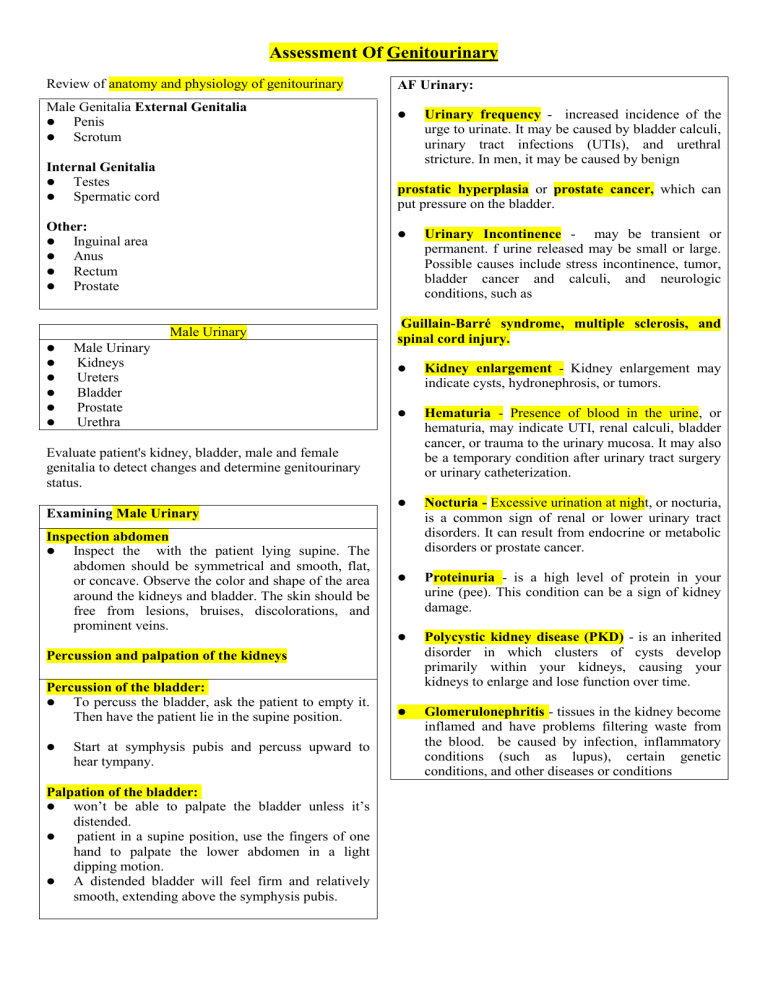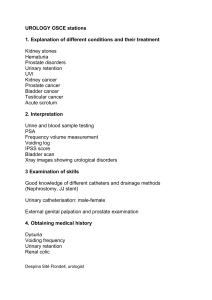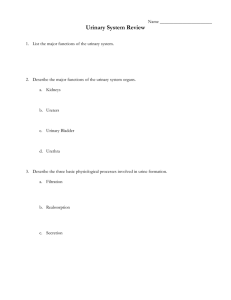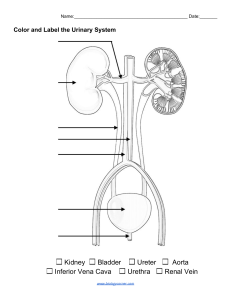Genitourinary Assessment Guide: Male Anatomy & Examination
advertisement

Assessment Of Genitourinary Review of anatomy and physiology of genitourinary Male Genitalia External Genitalia Penis Scrotum Internal Genitalia Testes Spermatic cord Male Urinary Male Urinary Kidneys Ureters Bladder Prostate Urethra Examining Male Urinary Inspection abdomen Inspect the with the patient lying supine. The abdomen should be symmetrical and smooth, flat, or concave. Observe the color and shape of the area around the kidneys and bladder. The skin should be free from lesions, bruises, discolorations, and prominent veins. Kidney enlargement - Kidney enlargement may indicate cysts, hydronephrosis, or tumors. Hematuria - Presence of blood in the urine, or hematuria, may indicate UTI, renal calculi, bladder cancer, or trauma to the urinary mucosa. It may also be a temporary condition after urinary tract surgery or urinary catheterization. Nocturia - Excessive urination at night, or nocturia, is a common sign of renal or lower urinary tract disorders. It can result from endocrine or metabolic disorders or prostate cancer. Proteinuria - is a high level of protein in your urine (pee). This condition can be a sign of kidney damage. Polycystic kidney disease (PKD) - is an inherited disorder in which clusters of cysts develop primarily within your kidneys, causing your kidneys to enlarge and lose function over time. Glomerulonephritis - tissues in the kidney become inflamed and have problems filtering waste from the blood. be caused by infection, inflammatory conditions (such as lupus), certain genetic conditions, and other diseases or conditions Percussion and palpation of the kidneys Percussion of the bladder: To percuss the bladder, ask the patient to empty it. Then have the patient lie in the supine position. Start at symphysis pubis and percuss upward to hear tympany. Palpation of the bladder: won’t be able to palpate the bladder unless it’s distended. patient in a supine position, use the fingers of one hand to palpate the lower abdomen in a light dipping motion. A distended bladder will feel firm and relatively smooth, extending above the symphysis pubis. Urinary Incontinence - may be transient or permanent. f urine released may be small or large. Possible causes include stress incontinence, tumor, bladder cancer and calculi, and neurologic conditions, such as Guillain-Barré syndrome, multiple sclerosis, and spinal cord injury. Evaluate patient's kidney, bladder, male and female genitalia to detect changes and determine genitourinary status. Urinary frequency - increased incidence of the urge to urinate. It may be caused by bladder calculi, urinary tract infections (UTIs), and urethral stricture. In men, it may be caused by benign prostatic hyperplasia or prostate cancer, which can put pressure on the bladder. Other: Inguinal area Anus Rectum Prostate AF Urinary:




